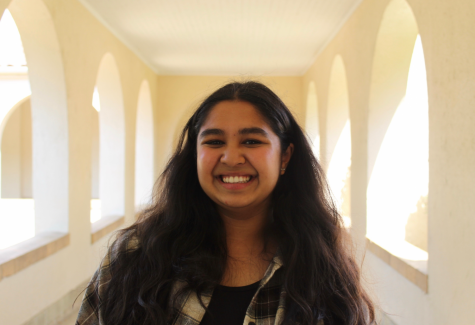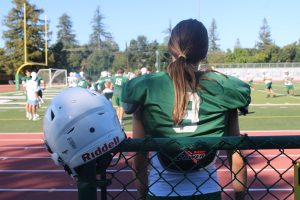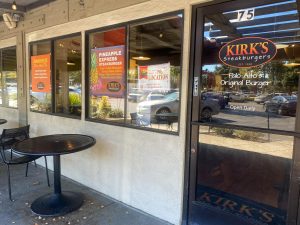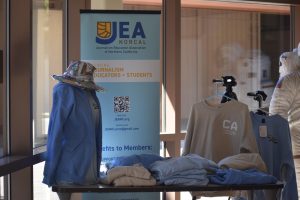Column: Distance learning is our best option
October 15, 2020
On Aug. 17, high schoolers in the Palo Alto Unified School District began their first day of school from the comfort of their homes due to the COVID-19 pandemic, and since then, many have modified their daily routines to adapt to the new schedule.
As a junior, I always expected to be focused on my academic workload and extracurricular activities to satisfy colleges. For me, the pandemic hasn’t shifted that; if anything, it’s pushed me to be more fixated on my work. Distance learning has kept me focused on school instead of constantly worrying about contracting the virus.
First graders in PAUSD, however, have to be aware of the virus constantly as they returned to an in-person schedule on Oct. 12, despite opposition from some parents and many teachers. About 700 students returned to elementary schools that week, which is just a little over half of first graders in the district, according to Palo Alto Online. While the Board of Education sees the schedule as a step in the right direction of returning to normal, many parents, teachers and even students believe it’s unsafe and incredibly risky for the health of the children and faculty.
Despite the risks, PAUSD plans to have all elementary school students back by Nov. 9 and plans to send secondary students back on Jan. 7, creating a higher risk of students — and, thus, their teachers, and their family members — getting infected as more students return.
With the board members unanimously approving the re-opening plan and significant portions of the community opposing it, the intentions of the plan are clearly flawed. Instead of rushing a date to go back into these unsafe environments, the board should shift its priorities to polishing the already-made virtual schedule. Safety of students should be the universal concern.
Personally, I have adjusted well to the virtual schedule from home because it gives me more flexibility in my daily schedule, gives me a good amount of asynchronous time per class for work and ensures a safe method of learning. Enduring the process of going back to school and having to readapt my schedule is an unnecessary and added adjustment that I, as many other students, don’t want to go through. Continuing the online schedule would unquestionably be a better and safer use of our remaining quarters in school.
However, some students still want to return to physically learning in schools; some feel distracted during classes, some have ongoing internet problems in the way of their learning, and others face “Zoom fatigue” from looking at a screen all day. Students who are disadvantaged at home and or apply to the free-and-reduced lunch programs need to be provided with the same essentials they get at school at home.
But, if the school board says that its No. 1 priority is the safety of their students and community, urging for an in-person learning schedule despite the immense risks seems counterproductive. The funding to supply resources to students who need lunches, technological devices and textbooks repeatedly changes each year, and keeping the distance learning schedule stabilizes the funding while continuing to prioritize these students’ needs.
Distance learning has given me a new perspective on life. I, along with many others, have learned to be more thorough in our schoolwork, while enjoying the family time we get to spend with loved ones. My stress level has been significantly reduced from learning at home, and in turn increased my mental health and happiness. Small, simple things like having an optimistic mindset and learning to adjust to different circumstances is incredibly beneficial not only right now, but for the future.
Instead of returning to school, faculty members should shift their focus to providing a better mental experience for online school. Adding more weekly check-ins during advisories for juniors and providing more online resources through the Wellness Center would be more beneficial than just reaching out to sophomores and seniors, especially because it’s a heavier course load for juniors.
Despite many parts of the U.S. being heavily affected with tens of thousands of cases reported per day, Santa Clara County has shown great progress recently, as the past couple weeks have shown a downward trend in cases and deaths. Opening schools will only counteract the progression we’ve made in Palo Alto.
Overall, learning from home, while it has its challenges, allows us to focus on what we’re intended to be focusing on; school. To keep all families healthy and continue to be a prudent community for the future, distance learning is our best option.




![In the fourth period AP Calculus BC class at Palo Alto High School, senior Crystal Li places her phone in the “phone jail.” Starting July 2026, this may become a normal procedure across schools in California thanks to Governor Gavin Newsom signing the Phone-Free School Act into law last week. According to Li, there are often unnecessary complications that come with enforcing phone restrictions. "It becomes a hassle putting it [a phone] in [the phone jail] before class, and taking it out after class," Li said. "There have been multiple times where kids from other periods interrupt the teacher to come back in and pick up a phone they left."](https://palyvoice.com/wp-content/uploads/2024/09/IMG_7386-3-300x225.jpg)



